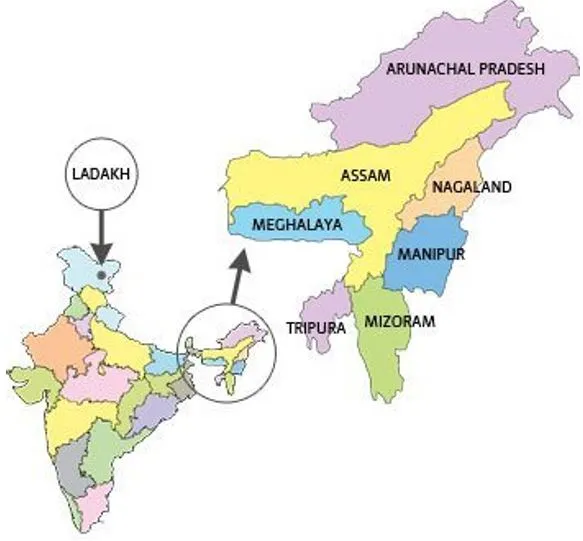

15th May 2025 (11 Topics)
Mains Issues
Context
For the first time in 25 years, a sitting US President (Donald Trump) has met a Syrian leader — Ahmed al-Sharaa, who has taken power after the fall of Bashar al-Assad. This meeting marks a major shift in US-Syria relations, with Trump announcing a full lifting of US sanctions on Syria and exploring the normalisation of diplomatic ties. It is significant not just for US foreign policy but also for the strategic dynamics of West Asia, especially in relation to Israel, Iran, the Abraham Accords, and Gulf investments.
What is the US Trying to Achieve?
- The US is trying to reintegrate Syria into the regional and global order through:
- Lifting sanctions.
- Encouraging economic reconstruction.
- Asking Syria to normalise relations with Israel via the Abraham Accords.
- It wants to strengthen US influence in the region:
- Diminish Iran’s hold in Syria by involving new leadership.
- Reduce the space for Russian and Iranian influence in the Levant.
- Encourage Syria to deport Palestinian factions labelled as terrorists by the US and take control of ISIS detention centres in Northeast Syria.
- Deal-Making Diplomacy: Trump links diplomacy with business deals and investments, visible in his engagements with Qatar, Saudi Arabia, and UAE, who pledged hundreds of billions in US investments and arms purchases.
Significant of the move
- Normalisation with Syria: Lifting sanctions paves the way for:
- Gulf countries to re-engage with Syria financially and diplomatically.
- Syrian reconstruction efforts which were previously stalled due to US sanctions.
- However, Israel-Syria normalisation remains uncertain and controversial, especially among sections of the Syrian population.
- Impact on the Abraham Accords: Trump is attempting to expand the Abraham Accords, which already include UAE, Bahrain, Morocco, and Sudan, to include Syria. But given Syria’s past stance and domestic political complexity, this move may face resistance.
- Iran and the Geopolitical Chessboard: Trump also mentioned his desire to strike a new nuclear deal with Iran, but tied it to Iran halting its:
- Proxy wars.
- Arms support to groups like Hezbollah, Houthis, and Hamas.
- Alleged nuclear ambitions.
- If the US under Trump normalizes ties with Syria (as per your article), this may open the door for India to increase official economic and strategic engagement without fear of secondary US sanctions.
India-Syria Relations:
|


Mains Issues
Context
Recently, Muhammad Yunus proposed a comprehensive economic integration plan involving Bangladesh, Nepal, Bhutan, and India’s Seven Northeastern States (commonly called the ‘Seven Sisters’). His remarks have triggered strategic and policy interest in India because:
- He linked India’s internal geography (i.e., the landlocked nature of Northeast India) to foreign powers like China.
How India's existing structure counter the ‘closed’ perception of Northeast?
- India’s Northeast is Landlocked — But Connected: Yes, the Northeastern region of India is landlocked, surrounded by international borders on almost all sides: China, Bhutan, Myanmar, Bangladesh.
- But India has built and secured alternative access through the Chicken’s Neck (Siliguri Corridor) and India-Bangladesh agreements on transit and trade.
- Bangladesh’s Role as a Transit Partner: India already uses Bangladeshi ports like Chattogram and Mongla for transporting goods to its Northeast. India-Bangladesh Protocol Routes, like the Ashuganj-Akhaura corridor and waterways on the Brahmaputra-Barak system, allow movement of goods and even energy.
- Hydropower and Energy Integration: A Tripartite Power Agreement between India, Nepal, and Bangladesh allows Bangladesh to import 40 MW of electricity from Nepal via India’s grid. Bhutan is already a major hydropower partner of India. Regional pooling of energy could reduce costs and increase energy security.
Strategic Concerns for India
- Bangladesh: Yunus’s pitch in Beijing suggested Bangladesh could be the ‘guardian of the ocean’ for India’s Northeast and an economic bridge to China. This raises eyebrows in Indian policy circles because:
- It internationalizes India’s internal regions.
- It implies dependence on Bangladesh for maritime access — undermining India’s own connectivity efforts.
- It indirectly invites China into India’s strategic backyard, which is highly sensitive given border tensions and BRI’s spread.
- China’s Interest in Northeast via Bangladesh: China has shown interest in projects in Chittagong, Mongla, and the BCIM Corridor (Bangladesh-China-India-Myanmar). A framework that brings in India’s Northeast into Chinese-linked projects raises national security and sovereignty issues.
- India has been cautious of letting China access Silk Road-like routes through Northeast India due to potential military and surveillance threats.
Fact-Box:India’s Northeast
Key Policy Initiatives
|


Mains Issues
Context
India recently became the first country in the world to develop rice varieties (DRR Dhan 100 (Kamala), Pusa DST Rice 1) using genome editing technology. This breakthrough is significant because it promises to address critical challenges such as climate change, pest resistance, and water scarcity, while increasing crop yield and nutritional quality.
What is Genome Editing and How is it Different from Genetic Modification?
- Genome editing is a modern biotechnological technique that allows scientists to make precise changes to an organism’s DNA. It involves editing specific parts of the genome without introducing genes from other species.
- There are different types of genome editing techniques, often categorized as Site-Directed Nuclease (SDN) methods:
- SDN-1: The DNA is cut at a specific location, and the cell repairs the break naturally, causing small mutations that could also occur naturally.
- SDN-2: The DNA is cut and a small piece of DNA is introduced to guide the repair process, making precise changes.
- SDN-3: Foreign DNA is inserted into the genome, which is considered traditional genetic modification (GM).
- The two rice varieties developed in India use SDN-1 and SDN-2 techniques, meaning they do not contain any foreign genes and thus are not classified as genetically modified (GM) crops under many regulatory frameworks.
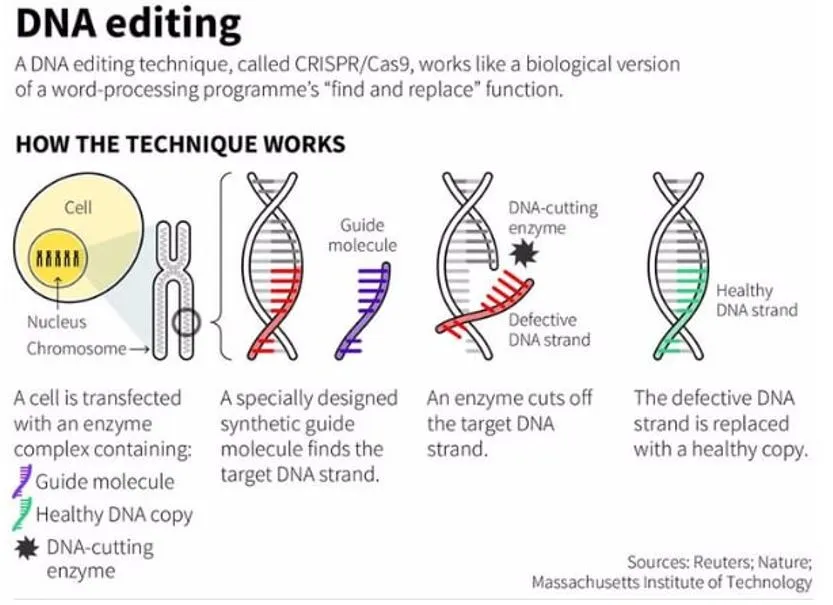
The Two New Genome-Edited Rice Varieties
India launched two genome-edited rice varieties developed by researchers under the Indian Council of Agricultural Research (ICAR):
- DRR Dhan 100 (Kamala): Developed from the popular high-yielding Samba Mahsuri rice, Kamala is superior in several aspects:
- Higher yield:37 tonnes per hectare compared to 4.5 tonnes of Samba Mahsuri.
- Drought tolerance and better nitrogen use efficiency.
- Earlier maturity: About 20 days earlier than its parent variety, which saves water, fertilizer, and reduces methane emissions.
This combination of traits makes it a climate-resilient, resource-efficient rice variety.
- Pusa DST Rice 1: Developed from the MTU1010 variety, this rice performs better under stress conditions like:
- Inland salinity stress:66% higher yield than MTU1010.
- Alkalinity and coastal salinity: Shows 14.66% and 30.4% yield advantage, respectively.
This makes Pusa DST Rice 1 valuable for cultivation in salt-affected areas.
Scientific Process Behind Development
- Scientists used advanced genome editing tools (SDN-1 and SDN-2) to create these rice varieties. This process involved:
- Precisely editing native genes within the rice plants without adding any foreign DNA.
- Extensive field trials across multiple locations and seasons to ensure consistent performance.
- Peer-reviewed research, with Pusa DST Rice 1’s research paper published in 2020 and widely cited, validating the scientific community’s recognition.
- The technology allows for precision breeding, which is faster and more targeted compared to traditional breeding or genetic modification.
Deoxyribonucleic acid (DNA):
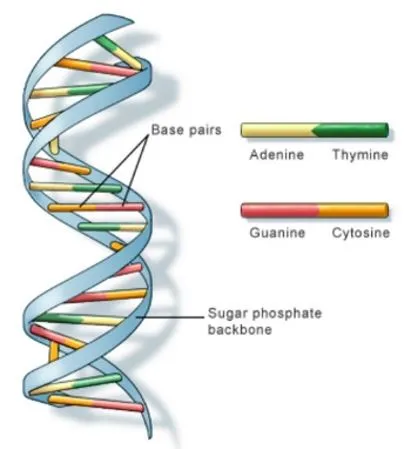 |


Prelims Articles
Context
Justice Bhushan Ramakrishna Gavai was sworn in as the Chief Justice of India (CJI). CJI Gavai succeeds Chief Justice Sanjiv Khanna, who demitted office on May 13, and will hold office till November 23, 2025. He is the 52nd Chief Justice of India.
Who is a CJI?
- The Chief Justice of India (CJI) is appointed by the President of India.
- The process of appointment involves consultation between the President and the current Chief Justice of India, as well as other key officials.
- The procedure is outlined in Article 124 of the Indian Constitution.
- Appointment Consultation:The President of India, while appointing the Chief Justice of India, is required to consult with the following individuals:
- The Chief Justice of India
- The Judges of the Supreme Court and High Courts as the President deems necessary.
- Recommendation by the Outgoing CJI:Typically, the outgoing Chief Justice of India recommends the name of the most senior judge of the Supreme Court as the next Chief Justice. The seniority is determined based on the length of service as a judge.
- President's Decision:After consultations and considering the recommendations, the President makes the final decision on the appointment of the Chief Justice of India.
- Oath of Office:Once appointed, the new Chief Justice of India takes the oath of office before the President. It's important to note that the appointment of the Chief Justice of India is based on the principle of seniority, and the most senior judge of the Supreme Court is typically appointed to the position.
- However, the President is not bound by the principle of seniority and has the discretion to appoint any judge of the Supreme Court as the Chief Justice.
- The Chief Justice of India holds office until the age of 65 years or until retirement, whichever is earlier.
- If a Chief Justice demits office, the President appoints the next senior-most judge of the Supreme Court as the new Chief Justice.
- The process is designed to ensure the independence of the judiciary and the continuity of leadership within the Supreme Court.


Prelims Articles
Context
Sikkim is celebrating the golden jubilee (50 years) of its statehood, which began on May 16, 1975, when it officially became the 22nd state of the Indian Union.
About
- Sikkim, before becoming a state of India, was an independent kingdom ruled by the Chogyal (monarch). Although it had close ties with India, especially after 1947, Sikkim was not an Indian state immediately after independence.
- It functioned as a protectorate of India under the 1950 Indo-Sikkim Treaty. Under this arrangement:
- India controlled Sikkim’s defense, external affairs, and communication.
- Sikkim retained autonomy in internal administration.
- Events Leading to Statehood (1973–1975)
- In the early 1970s, there was increasing political unrest in Sikkim, particularly due to allegations of undemocratic rule by the Chogyal and demands for more democracy by local political parties.
- The situation escalated in 1973, leading to mass protests.
- A tripartite agreement was signed between the Chogyal, Indian government, and Sikkimese political parties, leading to constitutional reforms and an elected government.
- In 1974, the elected Sikkim Assembly passed a resolution seeking association with India.
- Finally, in May 1975, following a referendum where over 97% voted in favor, the Indian Parliament passed the 36th Constitutional Amendment, making Sikkim the 22nd state of India.


Prelims Articles
Context
The Sample Registration System (SRS) Statistical Report 2021, released recently by the Registrar General of India, reveals that birth rates in several Indian states — especially Tamil Nadu, Delhi, and Kerala — are declining much faster than the national average.
Key Findings from SRS 2021
- Crude Birth Rate (CBR) Trends
- National CBR (2021): 19.3 births per 1,000 population.
- National rate of decline (2016–2021): 12% per year.
- States declining faster than national average:
- Tamil Nadu: –2.35% per year
- Delhi: –2.23% per year
- Kerala: –2.05% per year
- States with Slowest Decline:
- Rajasthan: –0.48%
- Bihar: –0.86%
- Chhattisgarh, Jharkhand: –0.98%
- Uttar Pradesh: –1.09%
- Uttarakhand: Only state with an increase in birth rate.
- Other Southern and Developed States with Declining CBR:
- Andhra Pradesh, Telangana, Karnataka, Kerala, Tamil Nadu – all showed declines faster than national average.
- Also includes Maharashtra, Gujarat, Odisha, Himachal Pradesh, Haryana, Jammu & Kashmir.
Fertility and Reproduction Indicators
- Total Fertility Rate (TFR) – 2021:
- India: 2.0 (replacement level)
- Above national average:
- Bihar: 3.0
- Uttar Pradesh: 2.7
- Madhya Pradesh: 2.6
- Rajasthan: 2.4
- Lowest TFR among large states: West Bengal (1.4)
- Gross Reproduction Rate (GRR)
- India: 1.0 (each woman gives birth to one surviving daughter)
- Higher GRR:
- Bihar: 1.4
- Rajasthan, MP: 1.2
- UP: 1.3
- West Bengal : GRR = 0.7 (lowest among large states)
Civil Registration System (CRS) 2021 Insights
- Increase in registered births: Bihar, Rajasthan, UP, Uttarakhand, West Bengal, J&K, Ladakh, and NE states like Mizoram, Arunachal, Nagaland.
- Decline in registered births since 2012: Andhra Pradesh, Tamil Nadu, Karnataka, Kerala.
- Telangana saw a sharp rise after 2019, followed by a steep decline after 2020.
Fact-Box:
|


Prelims Articles
Context
The number of SIP (Systematic Investment Plan) cancellations in mutual funds more than tripled in April 2025 compared to the previous month. The cancellation was mainly due to SEBI (Securities and Exchange Board of India) norms implemented to clean up invalid and inactive SIP accounts, rather than a panic reaction by investors.
SEBI Norms
- SEBI issued a circular in January 2024, to improve transparency and accuracy in reporting SIP data.
- According to the circular:
- SIPs with more than three consecutive failed payment attempts (for daily, weekly, monthly, fortnightly SIPs) are considered invalid.
- For quarterly and bimonthly SIPs, SIPs are invalid if payments are missed for two consecutive periods.
- Asset Management Companies (AMCs) must process SIP cancellations within 10 days from the investor's request.
- Before these rules, data on SIP cancellations included many inactive SIP accounts, which inflated cancellation numbers.
- The Association of Mutual Funds in India (AMFI) and AMCs were given until April 1, 2024, to comply with these norms and clean up invalid SIP accounts.
- The actual clean-up of legacy SIP accounts started around December 2024/January 2025 and continued through April 2025, causing a spike in cancellations.
What is SIP?
- Systematic Investment Plan (SIP) is a method of investing a fixed amount regularly (daily, weekly, monthly, etc.) in mutual funds.
- It helps investors build wealth gradually through disciplined investing and rupee-cost averaging.
- Investors authorize their bank to auto-debit a fixed amount periodically, which is invested in selected mutual fund schemes.


Prelims Articles
Context
For the first time ever, scientists in India have successfully assembled the complete chromosome-level genome of the Indian yak (Bos grunniens). This significant achievement was led by specialists from four institutions under the Indian Council of Agricultural Research (ICAR).
About Indian Yak (Bos grunniens)
- The Indian yak, often called the "ship of the Himalayas," is a large herbivore ungulate species.
- It inhabites remote areas of high-elevation alpine tundra, grasslands and cold desert of the Tibetan plateau.
- The native populations of wild yak in Bhutan and Nepal are believed to be extinct and their range is confined to China and India.
- It is a vital animal for people living in the high-altitude Himalayan regions such as Arunachal Pradesh, Ladakh, Sikkim, and Himachal Pradesh.
- These animals provide essential resources including meat, milk, and serve as pack animals for transport in difficult mountainous terrain.
- Yaks are uniquely adapted to survive in extreme conditions — freezing cold, low oxygen, and rugged terrain — which makes them indispensable for the livelihoods of Himalayan communities.
- However, yaks face growing threats from shrinking grazing areas, climate change, diseases, and loss of genetic diversity.
- Understanding the yak’s genome—the complete set of its DNA—helps scientists learn how these animals thrive in such harsh environments and how to protect and improve their populations.
- Conservation status:
- IUCN Red List: Vulnerable
- CITES: Appendix I
- Indian WildLife (Protection) Act, 1972: Schedule II
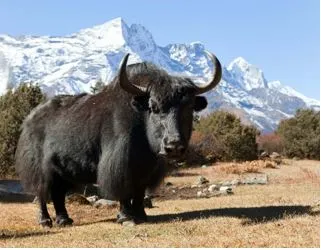
Chromosome-level genome assembly
Chromosomes:
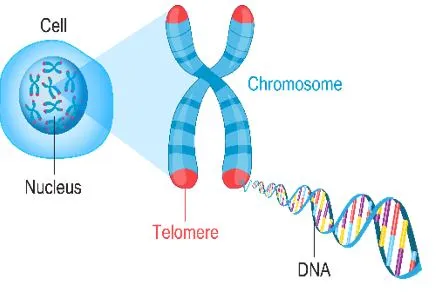 |


Editorials
Context
India's military operation, Operation Sindoor, during the latest standoff with Pakistan, marks a doctrinal and operational transformation in India’s approach to cross-border military engagements. It has showcased a shift from conventional warfare towards a multi-dimensional conflict strategy, incorporating drone warfare, information manipulation, layered air defences, and strategic deterrence.
Technological Innovation and Drone Warfare
- Rise of Drone-Centric Asymmetric Warfare: Operation Sindoor demonstrated a paradigm shift from costly manned aerial platforms to swarm-based UAV deployments, marking India’s entry into asymmetric warfare. India's usage of SkyStriker kamikaze drones signaled a new doctrine focused on low-cost, high-precision strikes with minimal collateral damage.
- Interception of Drone Intrusion by Pakistan: India intercepted 300–400 Turkish-origin Songar drones launched by Pakistan across 36 locations, reflecting scale, decentralisation, and sophistication of drone warfare, transforming the airspace into a contested, AI-powered combat zone.
- Multi-layered and Adaptive Air Defence Network: India's integration of Akash, QRSAM, S-400, Barak-8, and Akashteer (for real-time radar data fusion) illustrates the shift towards digitised and responsive air defence, moving away from static, hardware-based models to smart, layered deterrence systems.
Strategic Doctrine, Deterrence, and Escalation Control
- Strategic Deterrence without Escalation: Operation Sindoor highlighted calibrated escalation management, enabling India to project strategic intent without triggering full-scale war, representing a doctrinal shift from binary military responses to flexible and measured engagements.
- Doctrinal Transformation in Warfighting Philosophy: India's new military posture, as outlined in the PM's May 12 address, emphasizes rapid, precision-based retaliation, technological self-reliance, and escalation control, framing the "new normal" in national security calculus.
- Indigenous Capabilities and Technological Sovereignty: The operation underlined the imperative of technological independence, showcasing platforms like the Akash missile and progress in Project Kusha, aligning with broader goals of reducing foreign dependency and enhancing export potential in defence.
Information Warfare, Joint Operations, and Future Challenges
- Information and Perception Warfare: Pakistan's psychological operations leveraged doctored media, social platforms, and narrative manipulation, revealing the emergence of disinformation as a strategic military tool, with perception warfare becoming as vital as kinetic capabilities.
- Integrated Joint Operations and Real-Time Coordination: India’s armed forces achieved unprecedented tri-service synergy via the Integrated Air Command and Control System (IACCS), supported by coordinated inputs from domestic and external intelligence agencies, enabling seamless operational execution.
- Democratisation of Advanced Warfare Technologies: The accessibility of cutting-edge tech to adversaries like Pakistan presents asymmetric threats to India’s conventional superiority. It calls for a complete overhaul in strategy, planning, and intelligence to address emerging multi-domain conflicts.
Practice Question
Q. Operation Sindoor marks a doctrinal evolution in India’s military posture, with implications for future cross-border engagements. Examine the strategic, technological, and informational shifts reflected in the operation. In this context, critically analyse the relevance of multi-domain warfare in India's national security policy.

Editorials
Context
The Supreme Court of India, in Imran Pratapgarhi vs State of Gujarat, quashed an FIR against a Rajya Sabha MP, citing police failure to conduct a preliminary inquiry as required under Section 173(3) of the Bharatiya Nagarik Suraksha Sanhita (BNSS). The ruling highlighted the critical role of procedural safeguards and police discretion in ensuring principled criminalisation.
Legal and Philosophical Foundations of Criminalisation
- Power-Duty Nexus of the State: Criminalisation is not merely an assertion of state power but also a constitutional duty to publicly identify and address wrongdoing through fair, proportionate punishment.
- Tadros’ Integrated Framework: Legal theorist Victor Tadros argues that the state's power to criminalise is part of a larger normative obligation that includes prosecution, condemnation, and punishment of wrongs, embedded in public institutional processes.
- Criteria for Legitimate Criminalisation: As per Tatjana Hörnle, conduct should only be criminalised if it harms collective interests, involves violence, or violates the right to non-intervention — principles partially reflected in the Bharatiya Nyaya Sanhita (BNS).
Role of Procedure and Police Discretion
- Procedural Law as the Operational Core: The BNSS (procedural law) governs the real-time operations of criminal justice — determining how and when offences are registered, investigated, and prosecuted — making it central to criminalisation’s actual impact.
- Police as the First Gatekeepers: The police initiate the process of criminalisation through arrest, investigation, and FIR registration, and their discretionary power directly affects the extent and nature of law enforcement.
- Discretion and Its Risks: Unregulated discretion can lead to over-criminalisation of non-serious conduct and neglect of harmful wrongdoing, thus distorting the goals of the criminal justice system.
Supreme Court Interpretation of Section 173(3), BNSS
- Discretion Structured by Safeguards: Section 173(3), BNSS allows police to conduct a 14-day preliminary inquiry before registering an FIR for cognisable offences punishable with 3 to 7 years, aiming to prevent frivolous criminalisation.
- Judicial Reinforcement of Procedural Duty: In Imran Pratapgarhi, the Court held that preliminary inquiry is mandatory especially when fundamental rights like free speech are implicated, reinforcing the binding nature of procedural compliance.
- Guarding Against Police Overreach: The ruling emphasized that failure to follow due procedure amounts to abuse of police power, which can undermine both individual rights and the legitimacy of the criminal justice system.
Practice Question
Q. Discuss the concept of principled criminalisation in the context of India's new criminal codes. How does procedural law, particularly police discretion under Section 173(3) of BNSS, influence the balance between state power and individual rights? Illustrate with the Supreme Court's ruling in Imran Pratapgarhi vs State of Gujarat.

Editorials
Context
India recorded 1.68 lakh road accident fatalities in 2022, making it one of the highest globally. With urbanisation accelerating and vehicle ownership rising, urban mobility transformation must shift from speed-centric models to inclusivity and road safety, grounded in the constitutional right to life under Article 21.
Constitutional and Urban Imperatives
- Right to Safe Mobility under Article 21: Safe road travel is a derivative of the right to life, making road safety a constitutional and moral obligation. Citizens must not face threats to life or injury while using public roads.
- Urbanisation and Mobility Demand: By 2047, 50% of India’s population will reside in urban areas, increasing vehicular pressure and demanding people-centric, inclusive urban design focused on vulnerable users.
- Safe System Approach to Urban Design: This model accepts human error but demands that road systems prevent it from resulting in death. It promotes wider footpaths, cycle tracks, speed calming, and pedestrian-friendly infrastructure.
Institutional Initiatives and Structural Gaps
- MoRTH’s Safety Reforms: The Ministry has addressed over 5,000 black spots, mandated road safety audits, and implemented vehicle safety features like airbags and ABS, along with CCTV and speed camera enforcement.
- Driver Training and Fitness Push: Government aims to establish driver training and vehicle fitness centres in every district, recognising unskilled driving as a key risk factor in accidents.
- CSR-Based Road Safety Funding: Proposal to direct automakers’ CSR funds over 20–25 years towards road safety for infrastructure upgrades, training, trauma care, and public awareness as part of India’s Vision Zero.
Economic Rationale and Policy Strategy
- Macroeconomic Losses from Crashes: Road crashes cost India 3% of GDP annually, impacting both economic productivity and human development indicators.
- World Bank Road Safety Estimates (2020): Achieving a 50% fatality reduction needs $109 billion over the next decade, yielding 4x returns in avoided deaths, injuries, and improved mobility efficiency.
- Four Es of Road Safety Strategy: Effective road safety depends on integration of Engineering, Enforcement, Education, and Emergency Care, with urgent emphasis on design innovation and user sensitisation.
Practice Question
Q. “The right to safe road travel is integral to the right to life under Article 21 of the Constitution.” In this context, examine the Safe System Approach and critically evaluate India's institutional and economic strategy to reduce road accident fatalities.

